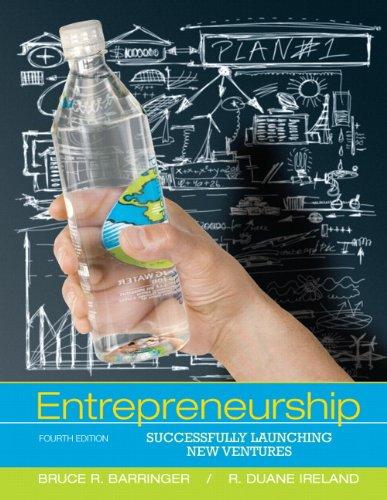If a new product or service seems like the perfect option to solve a problem or capitalize
Question:
If a new product or service seems like the perfect option to solve a problem or capitalize on an environmental trend, but its customers find out it can’t deliver on its promises, they will quickly jump ship. This is what happened to Clearly Canadian, one of the first bottled drinks to position itself in the new-age or wellness category.
Clearly Canadian introduced a line of fruit-flavored bottled water in the early 1990s. Its efforts were clearly an attempt to jump on an environmental trend—an increased interest in wellness. It positioned its drinks as a healthy alternative to soft drinks such as Coke, Pepsi, and Mountain Dew. Its bottles, labels, and packaging all supported the notion that the drinks were pure and fresh.
Canadian fruits, which have a fresh and robust flavor, were the basis for the six flavors in the initial Clearly Canadian line. The firm’s Canadian origins invoked images of clean lakes, pristine mountain ranges, rushing streams, and grassy plains. It was easy for someone to assume that they were doing their body a favor by buying and drinking a Clearly Canadian beverage.
But as Clearly Canadian’s drinks spread, consumers started reading the fine print on the labels. It turned out that Clearly Canadian drinks weren’t any healthier than soft drinks at the time. Its bottled water had about 160 calories, the same as a regular Pepsi. How could that be—it was water! It turned out that to sweeten and color its water, Clearly Canadian was using essentially the same artificial flavors, sweeteners, and preservatives that the soft drink companies were using. Customers quickly bailed and found more legitimate alternatives, like Snapple, which came out at about the same time.
The company has since reformulated its ingredients and is a healthier alternative to soft drinks than it once was, but it’s never gained much traction in the flavored bottled water wellness category.
The message from this firm’s experience is simple yet powerful—it takes more than talk and savvy marketing to capitalize on an environmental trend, solve a problem, or fill a gap in the marketplace. A company has to actually deliver on one of those promises to be successful.
Questions for Critical Thinking
1. Evaluate Clearly Canadian’s initial fruit-flavored bottled water on all four dimensions of an opportunity.
2. When you pick up a drink that’s clearly marketed as a healthy alternative to soda and sugared drinks, do you read the label to see if the drink is truly healthier than the alternatives? If it isn’t, do you feel deceived by the marketing?
3. How can a start-up that has good intentions make sure that its product is truly meeting the need that it was designed to meet?
4. Evaluate Clearly Canadian’s marketing of its products and the ingredients in its products today. Are the marketing and the products themselves in better sync than the products were when the drink was introduced in the early 1990s?
Step by Step Answer:

Entrepreneurship Successfully Launching New Ventures
ISBN: 9780132555524
4th Edition
Authors: Bruce R. Barringer, R. Duane Ireland





